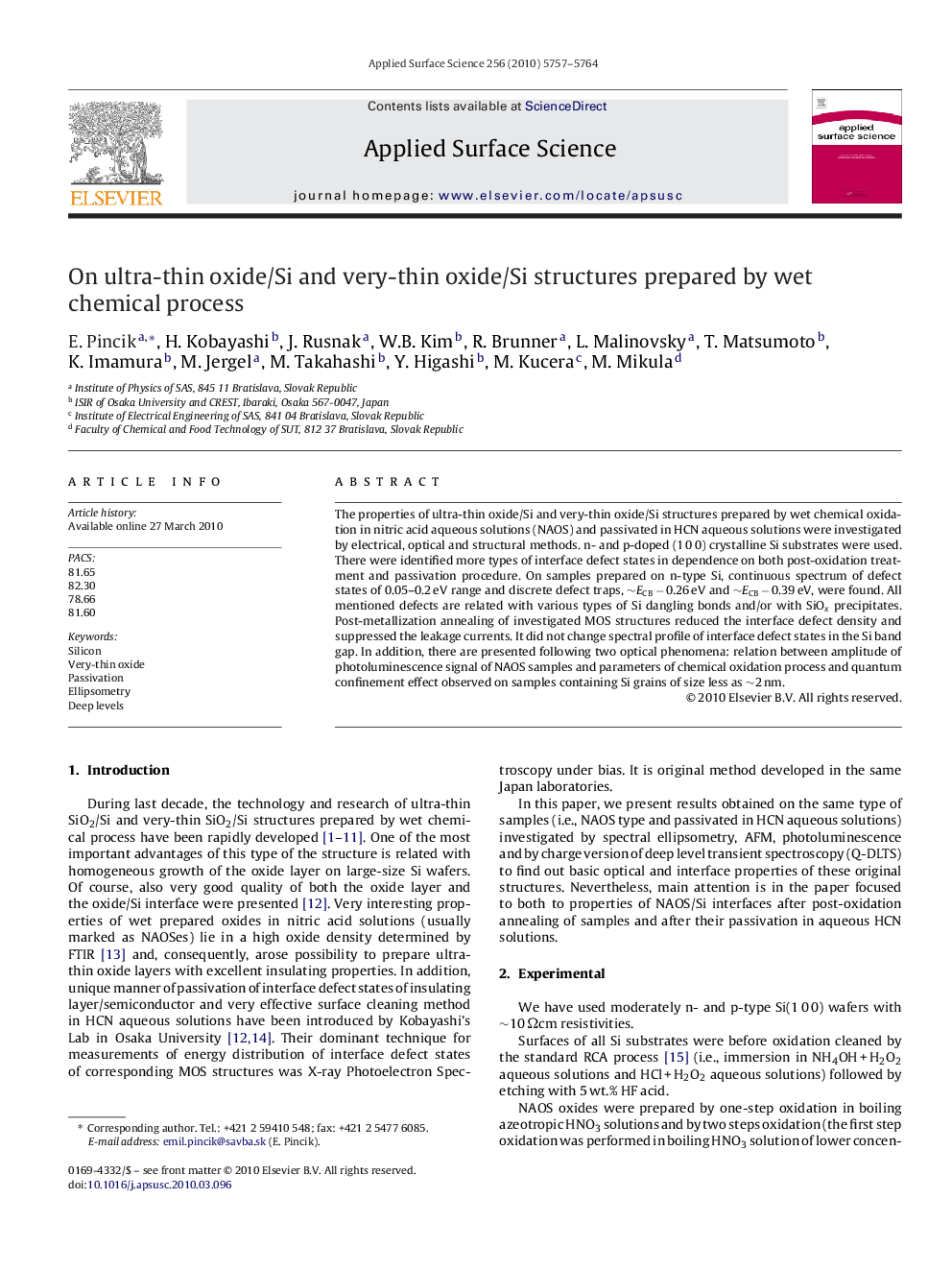| Article ID | Journal | Published Year | Pages | File Type |
|---|---|---|---|---|
| 5368395 | Applied Surface Science | 2010 | 8 Pages |
The properties of ultra-thin oxide/Si and very-thin oxide/Si structures prepared by wet chemical oxidation in nitric acid aqueous solutions (NAOS) and passivated in HCN aqueous solutions were investigated by electrical, optical and structural methods. n- and p-doped (1 0 0) crystalline Si substrates were used. There were identified more types of interface defect states in dependence on both post-oxidation treatment and passivation procedure. On samples prepared on n-type Si, continuous spectrum of defect states of 0.05-0.2 eV range and discrete defect traps, â¼ECB â 0.26 eV and â¼ECB â 0.39 eV, were found. All mentioned defects are related with various types of Si dangling bonds and/or with SiOx precipitates. Post-metallization annealing of investigated MOS structures reduced the interface defect density and suppressed the leakage currents. It did not change spectral profile of interface defect states in the Si band gap. In addition, there are presented following two optical phenomena: relation between amplitude of photoluminescence signal of NAOS samples and parameters of chemical oxidation process and quantum confinement effect observed on samples containing Si grains of size less as â¼2 nm.
